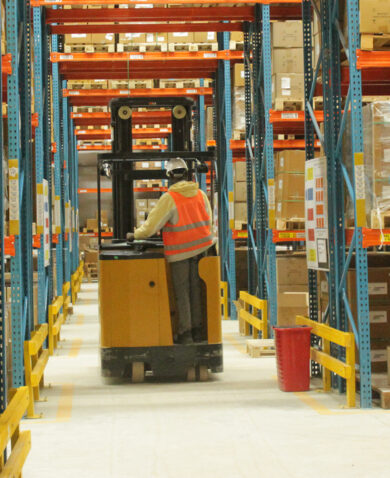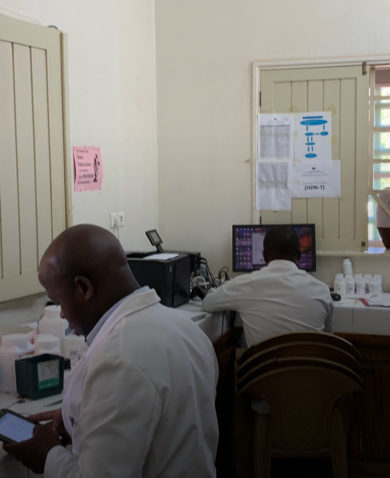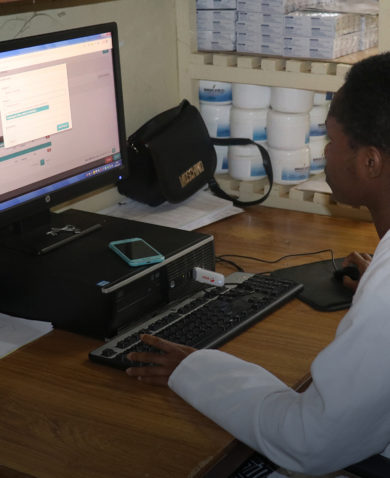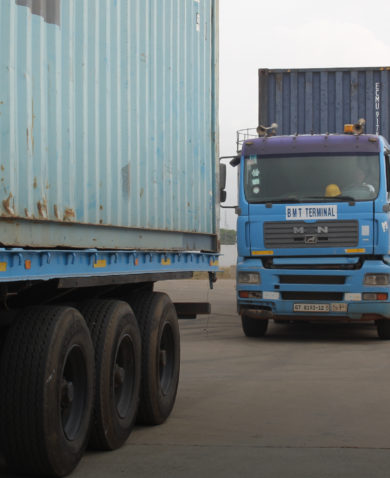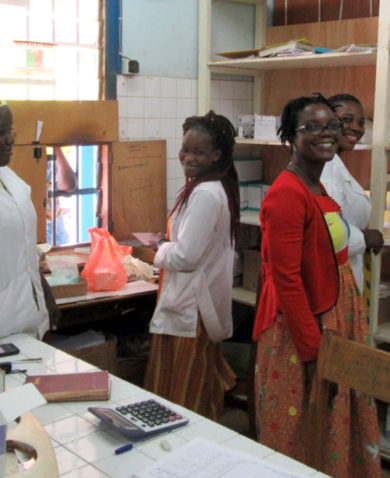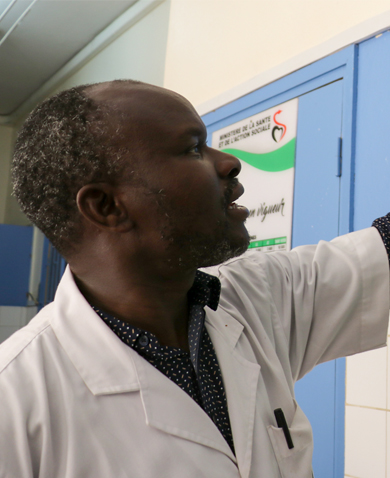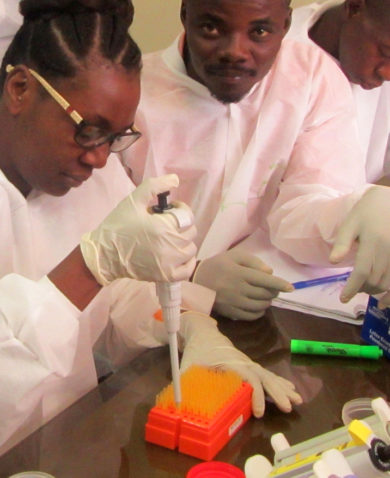
Using Prudent Multiplicity as an Approach to Increase Supply Chain Resiliency
June 12, 2023 | 4 Minute ReadTo build resilient health supply chains, Chemonics constantly manages risk by balancing the increased efficiencies of integration and the costs of diversification.
As we all experienced, the COVID-19 pandemic exposed fragilities within global supply chains, including the public health supply chains of the more than 70 countries supported by USAID. Consequently, the Chemonics-led USAID Global Health Supply Chain Program-Procurement and Supply Management (GHSC-PSM) project—of which I am part—had to confront new challenges including paused manufacturing of essential commodities like malaria rapid diagnostic tests, border closures, new and more stringent import requirements, and changing demand patterns as the need for COVID-19-specific products spiked. While GHSC-PSM rose to the occasion by sustaining its global supply chain, in addition to providing ultra-cold chain storage solutions for COVID-19 vaccines and supplying 8,724 ventilators to 43 countries, the pandemic caused USAID and the health supply chain community to pause and reflect on how to better define and build resiliency within public health supply chains.
Pre-pandemic, the focus was to build efficiency within public health supply chains through integration. This is reflected in the design of GHSC-PSM—USAID’s largest program to date—as one large, cross-cutting program that encompasses multiple programmatic areas like HIV/AIDS; malaria; and reproductive, maternal and child health; as well as procurement, in-country logistics, and technical assistance. This design proved to be successful in achieving management efficiencies and generating massive cost savings. The most recent GHSC-PSM annual report cites savings of $586 million on health products and $73.4 million in logistics costs over the life of the project.
Now, after COVID-19 taught us about the importance of supply chain resiliency, USAID, Chemonics, and the supply chain community at large have shifted to focus on diversification with the assumption that building multiplicity, or expanding the number of stakeholders (producers/manufacturers, vendors, transporters, distributors, and managers), will lower risk by better ensuring sustained performance in the face of disruption. This pivot towards multiplicity is evident in the design of the follow-on NextGen suite of awards, in which USAID has broken up its integrated program into multiple projects. This shift means that some supply chain functions, like procurement and in-country technical assistance, will be assigned to multiple contracts to conduct the same or overlapping tasks.
Recently, I attended a roundtable with some leaders on supply chain resiliency hosted by Chemonics and Foreign Policy. My Chemonics colleagues Rebecca Logan and Judi Heichelheim joined 15 other supply chain leaders from organizations such as The Global Fund, Gavi, the Vaccine Alliance, and the World Food Program to discuss approaches to building resiliency. I was especially interested in the discussions related to supply chain multiplicity, how it contributes to overall resilience and risk reduction, and how to achieve it. For me, three of the most salient points from that discussion were:
1. The importance of engaging stakeholders beyond the health sector.
The round table participants emphasized advocating multiplicity within public health supply chains to a broad audience. For example, ministries of finance could support return-on-investment analyses and, based on the results, commit to financial allocations. Ministries of trade and industry could co-lead initiatives to start and scale local manufacturing—an exciting approach to building multiplicity and hedging supplier and transport-related risks while boosting local economies. Civil society should understand the benefits of supply chain multiplicity and engage in oversight and accountability roles to ensure that additional investments are used prudently. Additionally, the private sector can play a role in increasing supply chain resiliency.
2. The need to enable the private sector.
In most of the countries where GHSC-PSM operates, the public health supply chain is centralized—meaning it is managed by a government-run central medical store. While it is important to continue strengthening these agencies, it is risky to rely on a single entity, which is often vulnerable to corruption, resourcing issues, bureaucracy, and changing political tides. The round table participants acknowledged the importance of also strengthening the private sector to encourage outsourcing and enabling a more competitive and performance-based supply chain ecosystem. The discussion focused on using financing and contracting avenues to attract private sector companies to participate in public sector supply chains.
3. The value of developing an evidence base.
Singular and integrated supply chains often generate increased efficiencies and cost savings. Building multiplicity, on the other hand, decreases risk, but requires increased investment for activities such as maintenance of safety stock, retention of additional logistics providers, and creation of financial incentives for new players to enter the market. As discussed in the round table, it is important to use risk modelling and hard data to project expected positive impacts that justify the additional investment and the trade-off that comes with them—what they called “just in time vs. just in case.” For example, a projection of potential lives saved during an emergency outbreak can help make the case for increasing strategic regional and national stockpiles; and data on expiries and transport costs can inform decisions around how to operate and replenish these stockpiles.
After participating in the round table and reflecting on Chemonics’ supply chain work since 2016, I can see that even as Chemonics helped build efficient integration through GHSC-PSM, it also embraced the concept of supply chain multiplicity as an organization. It has done this by strengthening faith-based organizations to potentially act as substitutes to or support for central medical stores, expanding USAID’s supplier base by supporting qualification of local wholesalers, collecting and analyzing vast amounts of data for costing exercises, and providing investment and business support to innovative private sector supply chain companies via engagement in the Investing in Innovation (i3) in Africa partnership.
Chemonics understands the benefits of building multiplicity within our supply chains and is constantly working to navigate the trade-offs between the increased efficiencies of integration and the costs of resiliency. In the end, we aim to achieve a balance that is referred to as prudent multiplicity, where the costs of diversifying and building multiplicity into our supply chains are substantiated by better risk management, improved supply chain performance, and ultimately, improved commodity availability for the people who need them.
Photo: Regional Warehouse in Nampula, Mozambique. Credit: Mickael Breard.
Posts on the blog represent the views of the authors and do not necessarily represent the views of Chemonics.

